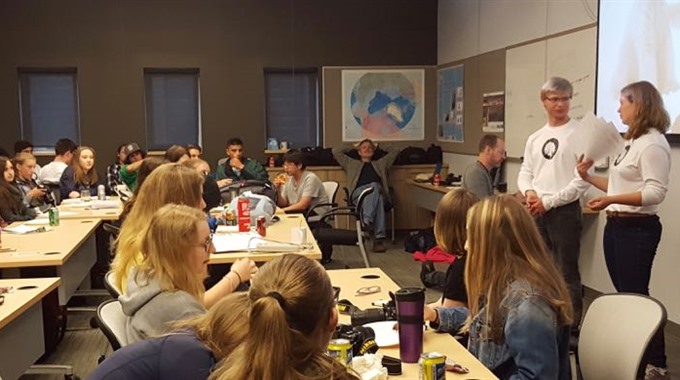ISAMR Science Odyssey
February 8, 2021
Kelvin ISAMR Students host Science Odyssey event at Assiniboine Park Zoo
Kelvin students from the Arctic group ISAMR (International Student-led Monitoring and Research) joined professors and researchers from the Leatherdale research center and the University of Manitoba to teach students from other schools about the "whisker imaging" technique that they have been using for their research with Dr. Jane Waterman. After an introduction by Dr. Jim Roth, the Kelvin leaders first taught the students how to take pictures that can be used to properly identify the zoo's nine polar bears. The next step was to upload their images into the facial recognition software. The software compares the pattern made from the whisker pores on the bears' faces to identify the bear in the photo with a bear library.
Scientists agree that whisker imagery is a less invasive way of tracking polar bears. It can be used to study bears in the north and to determine how many bears return to the same areas. One can then study different behavioural patterns and how other influences such as the presence of tourists could affect their behavior. The technology also allows scientists to monitor bears' body size and overall health as environmental conditions change.
All of the student leaders from Kelvin have been part of one of the Churchill trips. The focus of the summer trip is vegetation and the tundra, while the focus of the fall trip is polar bear research. All of these different aspects can help us understand and monitor the changing arctic environment in relation to climate change. This is important as we use scientific monitoring to start conversations about the environment and sustainability.
The event took place during Science Odyssey, a 10-day event hosted by the Natural Sciences and Engineering Research Council of Canada (NSERC) to engage and inspire young people by highlighting achievements in the sciences. "We want to train a bunch of keen minds so when they are in university we have great students to do research for us," said Stephen Peterson, head of conservation and research at the zoo. "We want to get them thinking about science and how much work goes into the results that they see."










